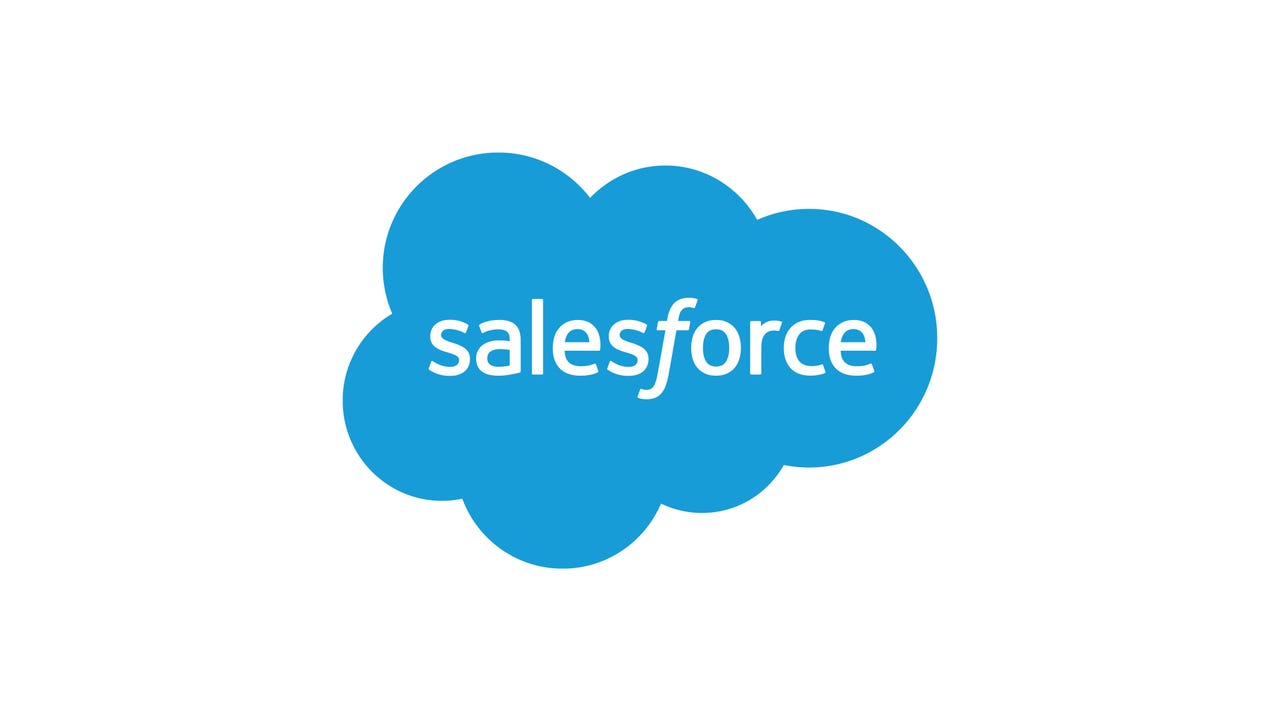Conversations in Collaboration: Salesforce’s Rahul Auradkar on How Agentforce AI Agents WorkConversations in Collaboration: Salesforce’s Rahul Auradkar on How Agentforce AI Agents Work
Touted by Salesforce as a digital labor force, AI Agents need data and integrations to function.

Welcome to No Jitter’s Conversations in Collaboration, in which we speak with executives and thought leaders about the key trends across the full stack of enterprise communications technologies.
In this conversation, we spoke with Rahul Auradkar, EVP & GM, Unified Data Services at Salesforce where he is at the core of Salesforce’s Data Cloud and Einstein product offerings. Rahul has galvanized Salesforce’s data & AI push and led the company to democratize data-driven AI-driven Customer 360 experience across its customers’ businesses, including Salesforce Platform, Data Cloud, and Sales, Service, Marketing and Commerce Clouds. Rahul spent more than 12 years at Microsoft, where he ultimately was the Product Unit Manager and GM in Azure and Office 365 business units.

Salesforce
In this conversation, Auradkar provided some insight into how Salesforce Agentforce works via a short demo in which the AI agent filled a customer-facing role and then worked alongside a human agent by autonomously fetching and serving both information and a recommendation to the person. This exemplifies the phrase ‘digital labor,’ which Salesforce began using more frequently in conjunction with its rollout of Agentforce.
Auradkar further stressed that what makes Agentforce agents possible is Salesforce’s unified data layer, which includes zero copy integrations into many different enterprise data systems. “Every enterprise keeps data in silos for various reasons,” he said, and that “leveraging those silos to improve customer engagement is the problem Salesforce is solving.”
NJ: What does it mean to pursue a DIY AI strategy versus the platform, or unified data approach that Salesforce advocates?
Rahul Auradkar (Auradkar): In the early days of Gen AI and LLMs, many of our enterprise customers and us, as well, were looking at ChatGPT, and others, and building a veneer…a ‘thin layer’…on top of the LLMs. That gave you immediate, knowledge-based answers, but [that approach] didn’t do [anything else] around [those] answers to deliver true, tangible business value to customers. For example, those veneers didn't [provide] integration into actions as an automation or integration into contextual metadata.
The Salesforce platform has a metadata layer that allows our customers to add custom objects and modify our existing objects with their fields. We map Data Cloud into that metadata. For example, every [action] a customer [takes] on a website becomes a first-class object inside our metadata platform.
What that means is that the customer, as a contact record, can be enhanced with everything that they've done with that business, whether it's a website or mobile engagement, or everything they bought from that business. You can then compute the lifetime value of the customer.
This is possible because we have the platform, and then we have Data Cloud that, with zero copy, connects [to multiple data sources to] transform, harmonize, unify and create these insights that then can be fed back into the activation layer.
From a DIY [perspective], people don't think about contextual data. They don't think about downstream automation. For example, an automation could be that the customer comes to the website and [we know that] they are dissatisfied with the business. We don’t want to market to them until we figure out why their sentiment is unhappy. To do that, all your business data has to be indexed and used in the context of how customers are engaging with your business.
All of that is hard to build. A veneer on top of an LLM might give you the immediate answers, but it doesn't give you tangible business value for context, for actions, for ongoing engagement, for feedback loop – for all of that. That's what we mean by those things are hard to build. The thin layer atop the LLM is easy to build.
NJ: To move from the veneer a company would have to build integrations into the front- or back-end systems that are being used?
Auradkar: Yes, they’d build all the integrations, which is nontrivial to do and, in most cases, they don't even have the metadata that is needed to integrate into. And often they don't even have the type of flow automation for actions to be driven. So now they must implement a system that drives that, and those systems may not have the triggers that are needed for them to drive the actions.
A simple action would be, [querying] the credit score of somebody who just called me, a human agent. That action that requires the [human] agent to access another system and even go into one of the credit agencies to get that score for the customer. Those things need to be done across systems and across companies, in a secure way, so that the data is secure, as well as the APIs.
NJ: Enterprises have many different systems and platforms and databases, some for internal communications and others for external communications, as well as for many other functions. How does an enterprise go about bringing all of that together?
Auradkar: That’s [basically] what we call the ‘deeply unified platform’ – bringing all the data and metadata, and all the intent discerned through the NLP and LLMs, etc., and then using the power of AI and LLMs to drive actions and app engagement. I'm not suggesting that we are a platform that integrates all the silos together. Silos exist for good reason. You have businesses that want to do analytics separately – a finance department doing compliance reporting or a legal department doing contracts, etc. Those platforms exist; those data silos exist. Honing in on those data silos and those systems is not the right approach. The right question is: How do you use the silos to drive better engagement with customers? That's the problem we are solving.
NJ: Another aspect to this is the ‘digital labor platform’ which Marc Benioff spoke about at Salesforce’s December Agentforce event. What’s different about digital labor from a person doing that same job?
Auradkar: The AI part of it is that digital labor augments humans, and does so seamlessly, and in a manner [such that] the human becomes that much more productive, and the AI becomes smarter, and humans then continue to become more productive.
[Editor’s note: Auradkar then showed a demo of Agentforce AI agents and human agents working together, under the auspices of a fictional banking company named Cumulus. The demo showed the customer, Alex, interacting with an Agentforce AI agent to essentially self-serve on a request to either get a cash advance or increase her credit card’s credit limit. To provide the information Alex requested about her past transactions, etc., the AI agent accessed data in a Snowflake warehouse which was then copied into Salesforce Data Cloud and harmonized to Alex’s contact record. The agent also accessed the contract Alex signed – i.e., unstructured data in Amazon S3 – and searched that document. These results were then presented to Alex who then decided to increase her credit limit, at which point the AI agent passed her to a human agent, MK, who picked up where the AI agent left off. MK then interacted with his own Agentforce AI agent, instructing it to fetch Alex’s credit score, account status and other attributes, as well as search the bank’s policy documents for what he was allowed to offer her. The AI agent completed that function and presented a recommendation on what to do. MK then directly interacted (via chat) with Alex and offered to increase her credit limit, which she accepted.]
NJ: What makes these AI agents in the demo agentic?
Auradkar: The AI agent is smart enough to discern intent. The Agentforce agent, along with our unified platform, knows how to respect PCI, PII, all of that. That sets us apart in terms of what really makes it truly agentic. It's not a regular chat bot of the past, where you're responding to questions – which is nontrivial to do. I'm not belittling that.
The future is where businesses really engage with the downstream customers – this requires actions across silos, across systems, and [involves] bringing in data across systems, and also respecting governance and security, and making sure that you have feedback loops, and you are engaging with customers across all channels, across all touch points, across all modalities, and maintaining context across all of that. That's what really sets it apart as agentic, along with our platform and Data Cloud.
[Although] we see digital labor as enhancing humans, there are certain tasks that humans are doing that can be delegated to a digital agent. The way to look at digital labor is that it’s taking away some of the more menial tasks to drive more productivity for the customer service rep.
NJ: If, for example, a human contact center agent has 15 different tasks that they need to do with every call, and if the agentic AI component – the digital labor – takes 10 of those and does them for the human agent, then the customer spends less total time on the phone but they get their issue resolved more quickly.
Auradkar: That's one way to look at it, as in giving 20 to 30% of my tasks to an Agentforce Agent and then, over time, maybe delegating more, so then I can [engage in] tasks that add more value to my downstream customer – in a sense, lifting productivity, not just for themselves, but also lifting productivity and value for the customers
Mark Benioff’s talked about this [regarding] Agentforce deployed on help.salesforce.com. Since implementing, Salesforce is handling about 32,000 customer conversations per week with a resolution rate of 83%. And, we have reduced the number of escalations that are going to humans by half since we introduced Agentforce [on our site].
Because there's less reliance on humans, we're using some of that human labor to drive higher value tasks within Salesforce. We are also hiring more people in different value add tasks that we are delivering through AI for our customers. So, will it reduce the reliance on humans and contact center and in customer service? The answer is, yes, and that allows us to use those people who are delivering those customer service for tasks that are higher value for our customers.
About the Author
You May Also Like




